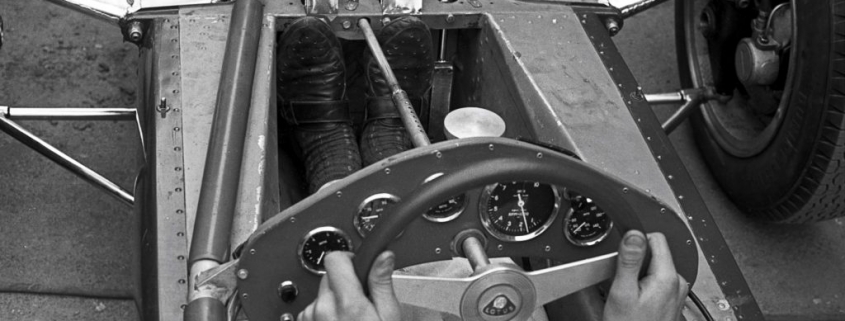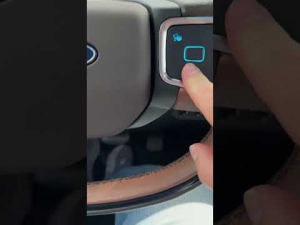Do F1 Cars Still Have Three Pedals?
Racing series are no strangers to innovation or drastic changes—just look at the Next Gen NASCAR racers. And when it comes to tech, Formula 1 is arguably at motoring’s cutting edge. However, while F1 cars aren’t designed quite like NASCAR or IndyCar racers, they’re all still fundamentally cars. So, on a basic level, they share a few things with road cars, including a driver-shifted transmission. But that doesn’t necessarily mean F1 cars have clutch pedals.
Once upon a time, F1 cars had the same three pedals as road cars
To be sure, F1 cars have never been road cars. But in terms of technology, the race cars were fairly even with road-going cars in the sport’s early days. And while the 1950s saw companies like BRM bring in innovations like disc brakes and pneumatic suspension, some things stayed the same. Like, for example, the fact that F1 cars had three pedals.
Today, the relative dearth of manual-equipped cars makes three-pedal driving increasingly rare. But back in Sir Stirling Moss’s heyday, automatic transmissions were only just starting to become available. And they were expensive, rather heavy, and sapped performance. The manual transmission remained the standard, especially in F1 racing. That meant all F1 cars had the same three pedals as a typical sports car: clutch, accelerator, and brake.
Those three pedals and the gear lever persisted in F1 cars for decades. Even as companies experimented with carbon fiber and aero features, the traditional layout remained. And it persists in Formula Vee to this day.
But you won’t find three pedals in a modern F1 car. And that’s in part because of one 1989 race car.
A ground-breaking 1989 Ferrari F1 car removed one of the pedals

If your car has shift paddles, you have Ferrari to thank. More specifically, you have the 1989 Ferrari Type 640 F1 car to thank. Because at the 1989 Brazilian GP, it introduced the concept of a paddle-shifted transmission to F1, Rosso Automobili explains. And in doing so, it effectively killed F1’s clutch pedals.
Inspired by the electro-hydraulic valves used in aircraft, Ferrari’s new transmission had some teething issues at first. But within a year, the cars were consistently doing well. By 1992, most F1 cars had ditched the stick and installed shift paddles. Then, by 1996, every F1 racer had shift paddles, DriveTribe says. And without a gear lever, the driver only engages the clutch during starts. So, shortly thereafter, the clutch pedal became another paddle on the steering wheel.

However, there was one F1 car that briefly retained its three pedals. In 1997, McLaren gave the MP4/12 race car back its third pedal. But it wasn’t because the MP4/12 had a gear lever or a foot clutch. No, the McLaren F1 team’s three pedals belonged that that time-honored tradition of creative chea—I mean, rule interpretation.
As shown in the photo above, the 1997 McLaren Mercedes MP4/12 has the requisite accelerator and brake pedals. Notice, though, that there’s a thin third pedal to the left of the large brake pedal. It’s not a clutch pedal, but a second brake pedal that only operates one of the rear brakes. By doing so, this ‘fiddle-brake’ or ‘steer-brake’ pedal lets the driver carve sharper corners.
While effective, McLaren’s setup was discovered after one sharp-eyed F1 photographer spotted one of the F1 car’s brake rotors unexpectedly glowing. And it was banned for 1998, Motor-Vision says. Thus, the era of three pedals in F1 was over.
Why stick to two today?
Although F1 cars now only have two pedals, the setup has several key advantages.
Firstly, it’s one less pedal that drivers have to pay attention to, Road & Track notes. Secondly, the Type 640’s lack of a gear linkage and clutch pedal allowed it to have a narrower, more aerodynamic nose. Plus, the lack of a clutch pedal makes it almost impossible for the driver to accidentally knock the F1 car out of gear and potentially damage the engine.
Also, it’s only because F1 cars have two pedals that racers can use left-foot braking. Although it’s not recommended for road use, left-foot braking is very effective on the racetrack, F1 Chronicle notes. And if there was a third pedal in the footwell, there wouldn’t leave enough space for proper left-foot-braking leverage.
So, no, F1 cars don’t have three pedals anymore. But that’s because they really only need two.
RELATED: How Wings Will Decide Who Wins the 2021 F1 Championship Battle
Follow more updates from MotorBiscuit on our Facebook page.
The post Do F1 Cars Still Have Three Pedals? appeared first on MotorBiscuit.







